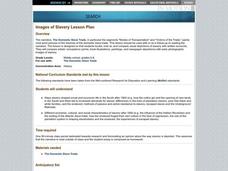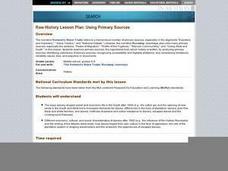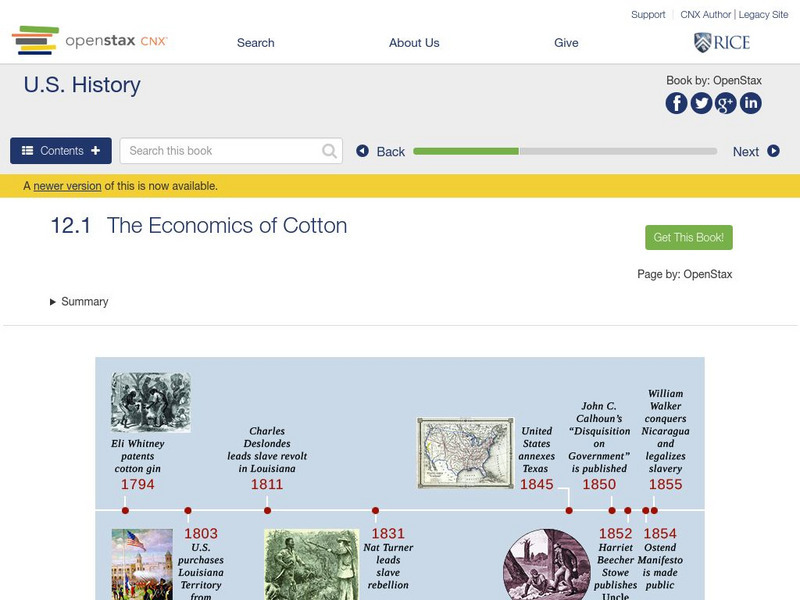Curated OER
Images of Slavery
Young scholars analyze the ways slavery shaped social and economic life in the South after 1800, methods of passive and active resistance to slavery; escaped slaves and the Underground Railroad, and the ending of the Atlantic slave trade.
Curated OER
RAW HISTORY: USING PRIMARY SOURCES
Young scholars analyze the ways slavery shaped social and economic life in the South after 1800, how slaves forged their own culture in the face of oppression; and the role of the plantation system in shaping slaveholders and the enslaved.
Curated OER
SLAVE TRADING AND SMALL TOWNS
Students research the ways slavery shaped social and economic life in the South after 1800, the different economic, cultural, and social characteristics of slavery after 1800, and how the Atlantic slave trade finally ended.
Curated OER
Differences in Location Lesson Plan: Treatment of Early African Americans
Students reach The Domestic Slave Trade, then examine the differences between the people enslaved in North America as opposed to those in Brazil.
Curated OER
Graphing and Demography: The Domestic Slave Trade
Students create graphs or charts based on the data a narrative imbedded in this plan. They make them either by hand or by using Excel or a similar database program. This lesson utilizes technology in a meaningful way.
OpenStax
Open Stax: The Economics of Cotton
This section of a chapter on "The Antebellum South" explains the labor-intensive processes of cotton production and describes the importance of cotton to the Atlantic and American antebellum economy.
Georgetown University
Georgetown: Georgetown Slavery Archive Further Reading
The Georgetown Slavery Archive is a repository of materials relating to the Maryland Jesuits, Georgetown University, and slavery. This page is a list of references for further research on slavery.
Other
Issuu: Searching for Truth in the Garden: Gonzaga's History With Slavery
This is a digital version of an exhibit prepared by Gonzaga student-historians, inspired by the Georgetown Slavery Archive. They researched the connections between Gonzaga and slavery and created this exhibit with their findings.








